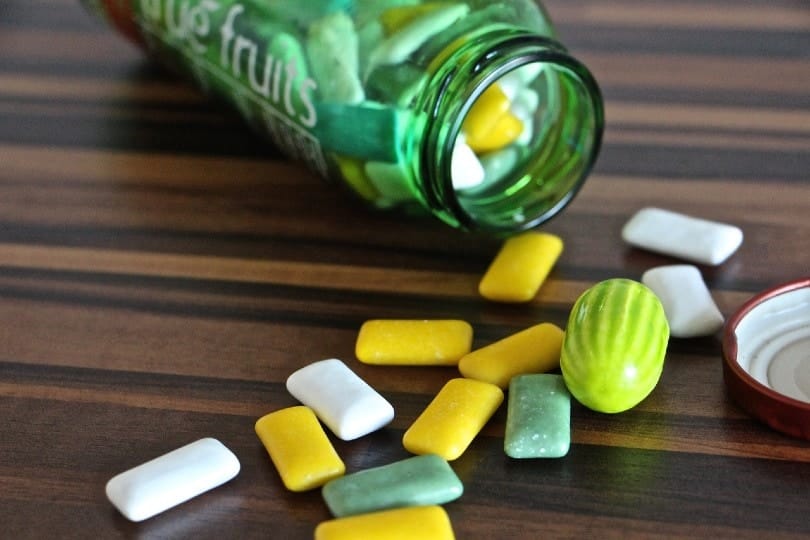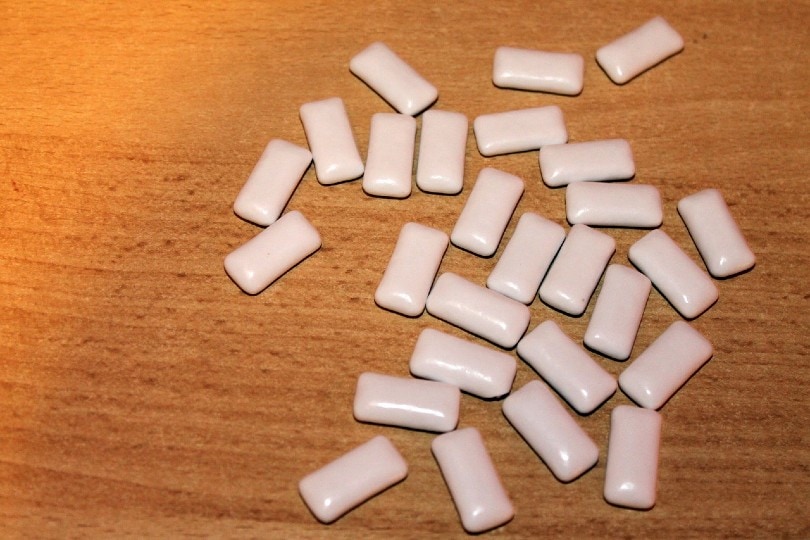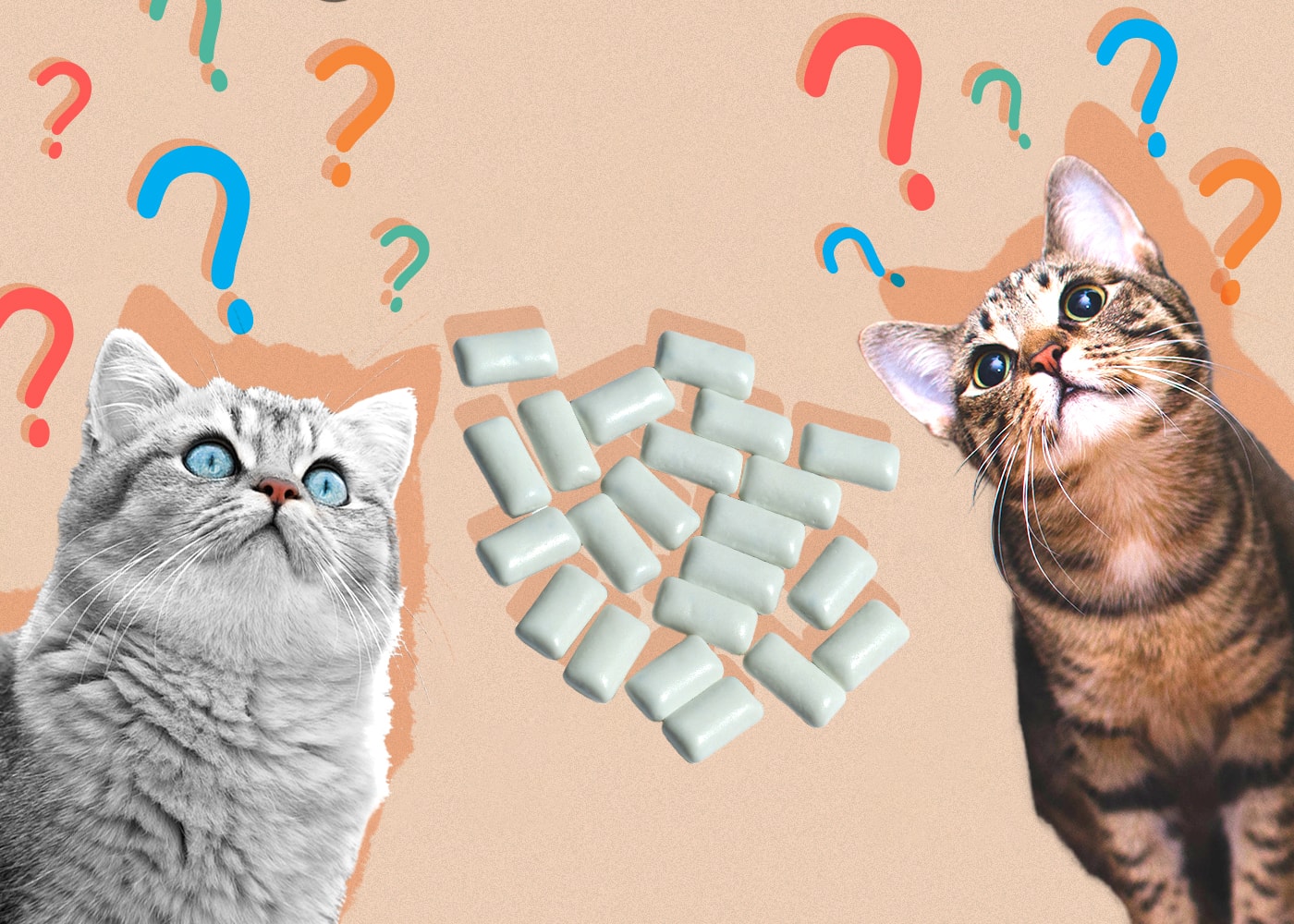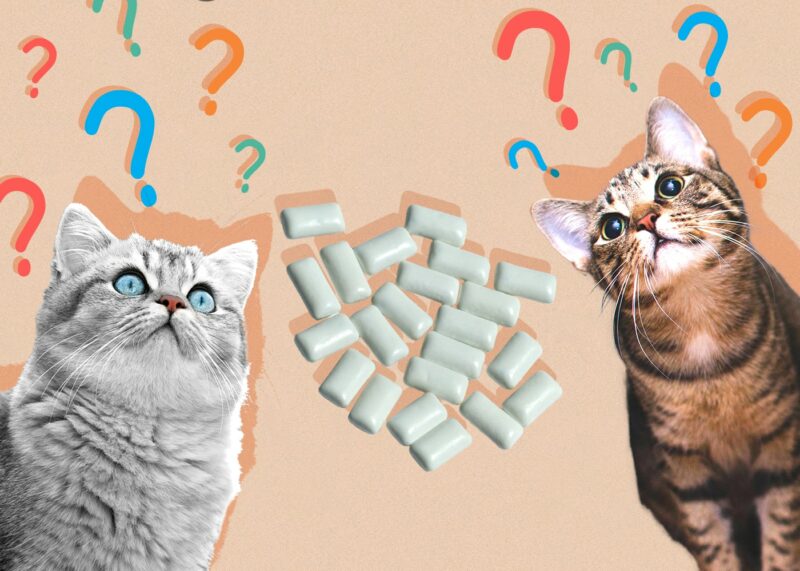Chewing gum comes in several flavors, and the scent can pique any cat’s curiosity, especially if it’s wrapped in shiny foil. So, it’s pretty easy for cats to accidentally take a bite or get it stuck on their face and paws.
Many types of gum are sweetened with xylitol. Unfortunately, xylitol is unsafe for cats, and it takes just a little time for cats to start feeling sick. So, it’s always best to stash gum in a spot that your cat can’t get into.
However, accidents occur even to the most vigilant cat owners, so if your cat swallows gum, here’s what you can do to help them feel better.
How Toxic is Gum to Cats?
Xylitol is a natural sweetener in some fruits, mushrooms, and trees. It’s a sugar alcohol that’s safe for humans but toxic for dogs and not a safe choice for cats. Along with being in gum, it’s commonly added to mouthwashes, toothpaste, breath fresheners, candy, and mints.
It only takes a small amount of xylitol for pets to experience poisoning. As a general rule of thumb, 1⁄10 of a gram of xylitol per kilogram of body weight can cause hypoglycemia. So, it would take about ½ a gram of xylitol to poison a 10-pound cat.
Most gum contains between ⅕–½ grams of xylitol per piece of gum. While cats aren’t known to have reactions as severe as dogs, it’s certainly not worth the risk of causing an onset of hypoglycemia in your pet.

Symptoms of Xylitol Poisoning in Cats
Cats can experience xylitol poisoning within 30 minutes of consumption. Along with hypoglycemia, they can display other signs:
- Ataxia
- Collapse
- Lethargy
- Seizures
- Vomiting
- Weakness
Treatment of Xylitol Poisoning
If you suspect your cat ate a piece of gum, call your veterinarian or emergency animal hospital immediately. Time is essential, and getting treated as soon as possible is vital to prevent fatal outcomes.
A veterinarian will most likely induce vomiting to remove as much xylitol from your cat’s stomach. Your cat may also receive IV fluids containing dextrose to combat hypoglycemia.
If your cat receives treatment quickly, they’ll most likely recover fully. Some severe cases can cause liver damage, which requires further treatment and recovery.
How to Protect Your Cat From Gum
Since one stick of gum can lead to severe consequences, it’s vital to protect your cat from gum and other household products containing xylitol. You can use several tactics to keep your cat from harm’s way.

Buy Xylitol-Free Gum
Not all gum contains xylitol. Many natural gum products are xylitol-free and unsafe for cats to consume but carry much less risk.
Hide the Gum
You can also hide your gum in a space your cat can’t reach easily, like a drawer that’s difficult to open. If you have a particularly clever cat that’s good at opening cabinets, you can try installing a pet-proof lock.
If you have a vehicle, you can hide the gum in your car, so it’s still easy to access while being entirely out of reach for your cat.
Substitute Gum With a Toy
If you think your cat likes gum because of its shiny packaging, try redirecting their attention to a shiny toy. You can also sprinkle catnip or spray the toy with catnip spray to make it more enticing.
How to Clean Gum Out of Your Cat’s Fur
If gum gets stuck on your cat’s fur, it’s best to remove it immediately. Sometimes, you can salvage their fur before having to cut it off. First, try rubbing an ice cube on the gum. Frozen gum loses its stickiness and can come off the fur more easily. If the ice cube doesn’t work, try massaging oil that’s safe for cats into the gum. You can use mineral oil, olive oil, or vegetable oil.
The oil will break down the gum and cause it to dissolve. Remove the chunk of gum, lather pet shampoo on the oily area, and rinse with water. If oil doesn’t work, you’ll have to resort to trimming your cat’s fur. You can contact your local pet groomer to see if they can squeeze in a last-minute appointment for a quick trim.
Final Thoughts on Gum and Cats
Gum can be dangerous for cats if it contains xylitol, but in general, it’s best to keep your cat away from chewing gum. Even if it’s xylitol-free, your cat can quickly become a sticky mess if they play with gum. Gum can also be a choking hazard. Therefore, keep your gum in a secure and unreachable place to avoid unsafe and messy situations.














